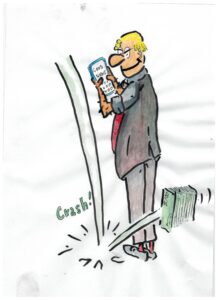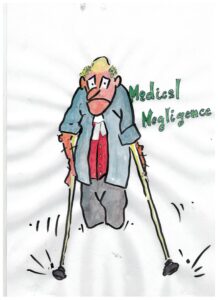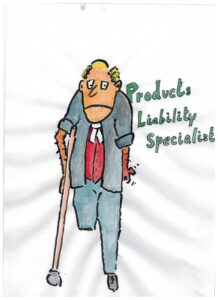Legal Principles Governing Pre-Contractual Statements – will they be Promissory or Representational?
- 2014-04-20
- By whiggs
- Posted in Fundraising (Chapter 6D)
Authorities on whether pre-contractual statements are promissory or representational
A statement may be on a matter of importance upon which the representee was intended to and did rely without being promissory: J J Savage & Sons Pty Ltd v Blakney [1970] HCA 6; (1970) 119 CLR 435. In that case, the vendor of a boat and engine, in the course of pre-contractual negotiations, provided his estimate of the speed the boat would reach if powered by a particular engine. The High Court described the statement as an expression of opinion as the result “of approximate calculation based on probability” which tended against the inference of a promise that the boat would in fact achieve the nominated speed. Statements of opinion on future matters are less likely to be found to be promissory even if they induce entry into a contract.
In J J Savage & Sons Pty Ltd v Blakney [1970] HCA 6; (1970) 119 CLR 435, the High Court considered whether a statement made in the course of negotiations for the construction of a motor boat was promissory or representational. During the negotiations the plaintiff requested the defendant’s manager to place in writing his views upon various engines that might be used in the boat. The defendant set out in a letter details in relation to three types of engines and made recommendations in favour of one engine, of which the “estimated speed” was stated to be 15 miles per hour. The plaintiff ordered a boat with the engine recommended by the defendant. A written contract was executed in which no reference was made to the capacity of the boat to attain any particular speed. The boat supplied to the plaintiff was not capable of a speed in excess of 12 miles per hour. The plaintiff sued the defendant for breach of warranty, alleging that the representation in relation to “estimated speed” was a condition or warranty of the contract, alternatively that it was a collateral warranty to the contract. The Full Court of the Supreme Court of Victoria held that the representation was a collateral warranty by the defendant that the boat would attain a speed of approximately 15 miles per hour. An appeal to the High Court was allowed. Barwick CJ, Kitto, Menzies, Owen and Walsh JJ said, at 442 – 443:
“The Full Court seems to have thought it sufficient in order to establish a collateral warranty that without the statement as to the estimated speed the contract of purchase would never have been made. But that circumstance is, in our opinion, in itself insufficient to support the conclusion that a warranty was given. So much can be said of an innocent representation inducing a contract. The question is whether there was a promise by the appellant that the boat would in fact attain the stated speed if powered by the stipulated engine, the entry into the contract to purchase the boat providing the consideration to make the promise effective. The expression in De Lassalle v. Guildford [1901] 2 KB 215, at p 222 that without the statement the contract in that case would not have been made does not, in our opinion, provide an alternative and independent ground on which a collateral warranty can be established. Such a fact is but a step in some circumstances towards the only conclusion which will support a collateral warranty, namely, that the statement so relied on was promissory and not merely representational.
When the letter which we have quoted was written, the negotiations for the construction and delivery of the boat were incomplete. On receipt of the letter there were three courses open to the respondent. He could have required the attainment of the speed to be inserted in the specification as a condition of the contract; or he could have sought from the appellant a promise – however expressed, whether as an assurance, guarantee, promise or otherwise – that the boat would attain the speed as a prerequisite to his ordering the boat; or he could be content to form his own judgment as to the suitable power unit for the boat relying upon the opinion of the appellant of whose reputation and experience in the relevant field he had, as the trial judge found, a high regard. Only the second course would give rise to a collateral warranty.”
Whether a statement (be it of fact, intention or opinion) is promissory, is determined objectively by reference to the whole of the relevant circumstances: Hospital Products Ltd v United States Surgical Corporation [1984] HCA 64; (1984) 156 CLR 41. Gibbs CJ said in that case (at 61 – 62):
“If the parties did not intend that there should be contractual liability in respect of the accuracy of the representation, it will not create contractual obligations. In the present case [the respondent], who made his statements fraudulently, had, of course, no intention that they should amount to contractual undertakings, but he could not rely on his secret thoughts to escape liability, if his representations were reasonably considered by the persons to whom they were made as intended to be contractual promises, and if those persons intended to accept them as such. The intention of the parties is to be ascertained objectively; it ‘can only be deduced from the totality of the evidence’: Heilbut, Symons & Co. v. Buckleton [1912] UKHL 2; [1913] A.C. 30, at p. 51.”
If an intelligent bystander would reasonably infer that a contractual promise was intended, that would suffice even though neither party in fact had it in mind: Hornal v Neuberger Products Limited [1957] 1 QB 247 at 256 per Denning LJ.
Whether a statement is promissory or representational depends upon the intention of the parties, and their intention is to be ascertained objectively from the totality of the evidence. See Hospital Products Ltd v United States Surgical Corporation [1984] HCA 64; (1984) 156 CLR 41, at 61 – 62. The distinction between a representation on the one hand and a promise on the other is, however, fine, and the distinction is difficult to apply. See Ross v Allis-Chalmers Australia Pty Ltd (1981) 55 ALJR 8, at 11 – 12.
In Hyundai Elevator Co Ltd v Liftronic Pty Ltd, unreported; CA SCt of NSW; Mahoney, Priestley and Handley JJA; 9 December 1994, Priestley JA said, at 19:
“… the question whether the words used were promissory over and above being representational is to be decided objectively. The subjective intentions of the parties, if they could be known, would not be conclusive. If both had in fact had it in mind that the statements were promissory, then it is very likely that this understanding would have been manifested so that a reasonably intelligent bystander would have recognised that a binding promise was being offered; but, if there were no outward manifestation of the internal understanding it would be for the court to decide from whatever communications had passed between the parties whether or not the statements were promissory: cf Taylor v Johnson [1983] HCA 5; (1983) 151 CLR 422 at 428 – 429.”
In Australian National Nominees Pty Ltd v GPC No 11 Pty Ltd [2004] NSWSC 773 the plaintiffs lent money to the first or second defendant in response to invitations to the public, contained in information memoranda, to lend money to those defendants. The loans were to be secured by promissory notes. The plaintiffs contended that the terms embodied in the information memoranda were terms of the contracts of loan evidenced by the promissory notes. Einstein J held that the terms of the information memoranda were merely representational. His Honour was unable to discern from the information memoranda an objective intention that the words upon which the plaintiffs relied were promissory in character.
In Gates v The City Mutual Life Assurance Society Limited (1986) 160 CLR 1, the statement in issue was of an intention in relation to a future matter. The statement was to the effect “that the total disability benefit under the provisions [the insurer’s agent] was recommending for inclusion in his existing and new policy would be payable to [the appellant] if he suffered an injury or illness which left him physically incapable of carrying on his occupation as a self-employed builder”. Gibbs CJ said (at 5):
“The question whether the statements constituted a collateral contract depends on the intention of the parties … In the present case the statements were not promissory in form –– they purported to be descriptive or explanatory of one of the terms of the formal written contracts into which the parties proposed to enter. I find it impossible to say that either of the parties actually intended that the statements should constitute a term of the contracts between them or … that an objective inference can be drawn that they did so intend. The statements were representations and nothing more.”
In Emu Brewery Mezzanine Ltd (In Liq) v Australian Securities and Investments Commission [2006] WASCA 105 BUSS JA at [90] said:
In my opinion, the statements in the Information Memorandum relied on by the respondent were not intended, objectively, to have contractual force. Some of the statements are imprecise and lack detail, and others are merely explanatory or descriptive. The absence of precision and detail is more consistent with the statements as a whole being intended, objectively, to be representations. No doubt, the sole or dominant purpose of the statements was to induce potential investors to invest in the promissory note issue. However, even if the investors were induced to invest in reliance on the statements, that circumstance would not, in itself, be sufficient to support a conclusion that the statements were intended, objectively, to be promissory. In my opinion, the statements were not, either individually or collectively, the subject matter of an assurance. They conveyed representations, but did not constitute enforceable promises.
SEARCH BLOG POSTS
LATEST BLOG POSTS
- Updated product safety mandatory reporting guidance for suppliers now available
- Pleading fraud – cause and effect is essential
- Does the Trustee’s right of indemnity have priority over the right of beneficiaries in relation to assets?
- Rules of war (in a nutshell) | The Laws Of War
- MH370 Final Report
Past Blog Posts
- December 2021
- September 2021
- August 2021
- May 2021
- April 2021
- March 2021
- August 2020
- February 2020
- September 2019
- February 2019
- December 2018
- July 2018
- April 2018
- December 2017
- May 2017
- February 2017
- December 2016
- November 2016
- October 2016
- September 2016
- August 2016
- April 2016
- March 2016
- October 2015
- September 2015
- August 2015
- May 2014
- April 2014
- March 2014
- January 2014
Categories
- Appeals
- Artificial Intelligence
- Aviation law
- Banking and Finance Law
- Blogs
- Civil Liability Act
- Class Actions
- Coding for lawyers
- common law
- Consumer Claims (TPA)
- Contract Law
- Contractual Interpretation
- Criminal law
- Deeds
- Docassemble
- duty of care
- Engineering Law
- Equity
- Evidence
- Exclusion Clauses
- Execution of documents
- Expert Witness
- featured
- Financial Services
- Fraud
- Fundraising (Chapter 6D)
- General comment
- Home Building Law
- Insurance
- Legal drafting
- Local Court
- Medical Negligence
- MH370
- Motor Accidents
- Negligence
- Occupiers negligence
- Other
- Personal Injury
- Personal Property Securities (PPSA)
- Pleading
- Practice & Procedure
- Products Liability
- Property
- Real Property
- Reasons for a decision
- Securitisation
- Security (Mortgages & Charges)
- Sentencing
- Swaps & Derivatives
- Teaching
- Transactional Law
- Transfer of financial assets in transactions
- Trusts & Trustee Law
- Uncategorized
- War and Weaponry
- Witnesses
SEARCH BLOG POSTS
LATEST BLOG POSTS
- Updated product safety mandatory reporting guidance for suppliers now available
- Pleading fraud – cause and effect is essential
- Does the Trustee’s right of indemnity have priority over the right of beneficiaries in relation to assets?
- Rules of war (in a nutshell) | The Laws Of War
- MH370 Final Report
Past Blog Posts
- December 2021
- September 2021
- August 2021
- May 2021
- April 2021
- March 2021
- August 2020
- February 2020
- September 2019
- February 2019
- December 2018
- July 2018
- April 2018
- December 2017
- May 2017
- February 2017
- December 2016
- November 2016
- October 2016
- September 2016
- August 2016
- April 2016
- March 2016
- October 2015
- September 2015
- August 2015
- May 2014
- April 2014
- March 2014
- January 2014
Categories
- Appeals
- Artificial Intelligence
- Aviation law
- Banking and Finance Law
- Blogs
- Civil Liability Act
- Class Actions
- Coding for lawyers
- common law
- Consumer Claims (TPA)
- Contract Law
- Contractual Interpretation
- Criminal law
- Deeds
- Docassemble
- duty of care
- Engineering Law
- Equity
- Evidence
- Exclusion Clauses
- Execution of documents
- Expert Witness
- featured
- Financial Services
- Fraud
- Fundraising (Chapter 6D)
- General comment
- Home Building Law
- Insurance
- Legal drafting
- Local Court
- Medical Negligence
- MH370
- Motor Accidents
- Negligence
- Occupiers negligence
- Other
- Personal Injury
- Personal Property Securities (PPSA)
- Pleading
- Practice & Procedure
- Products Liability
- Property
- Real Property
- Reasons for a decision
- Securitisation
- Security (Mortgages & Charges)
- Sentencing
- Swaps & Derivatives
- Teaching
- Transactional Law
- Transfer of financial assets in transactions
- Trusts & Trustee Law
- Uncategorized
- War and Weaponry
- Witnesses




